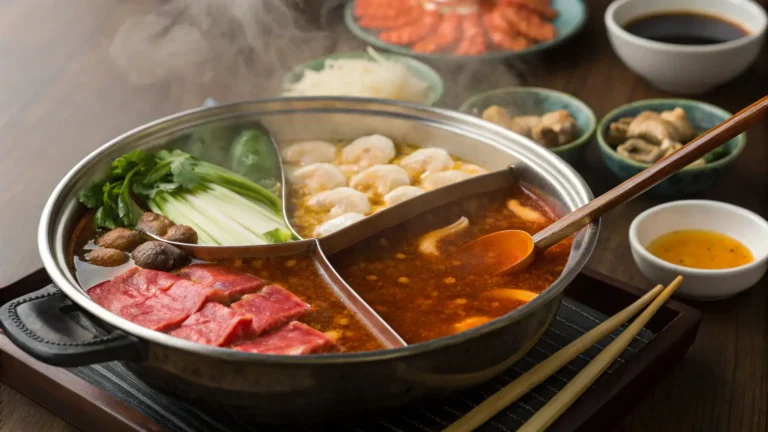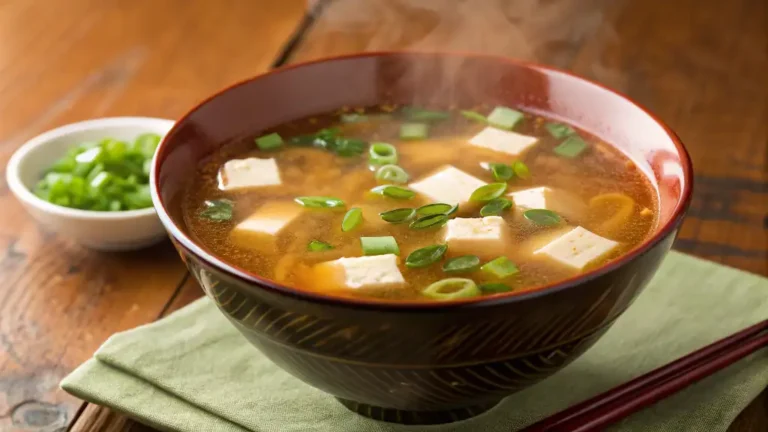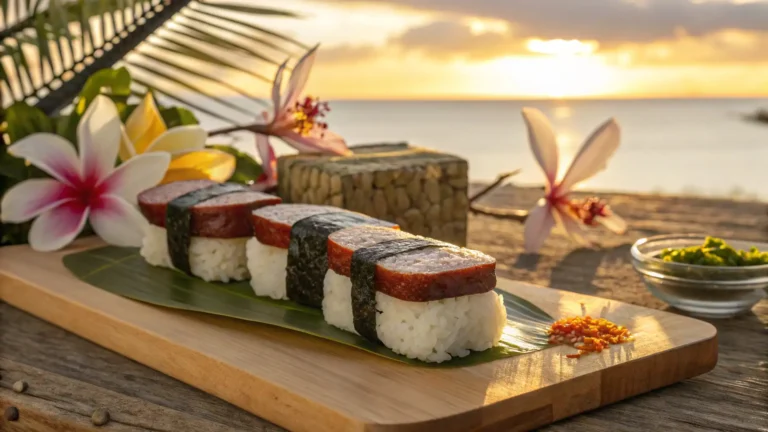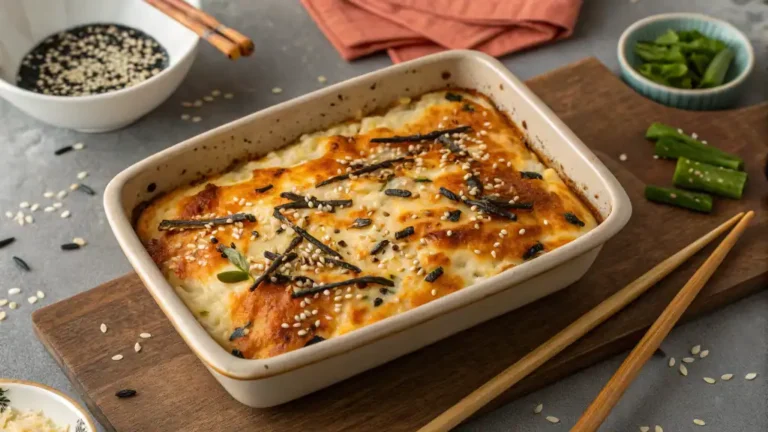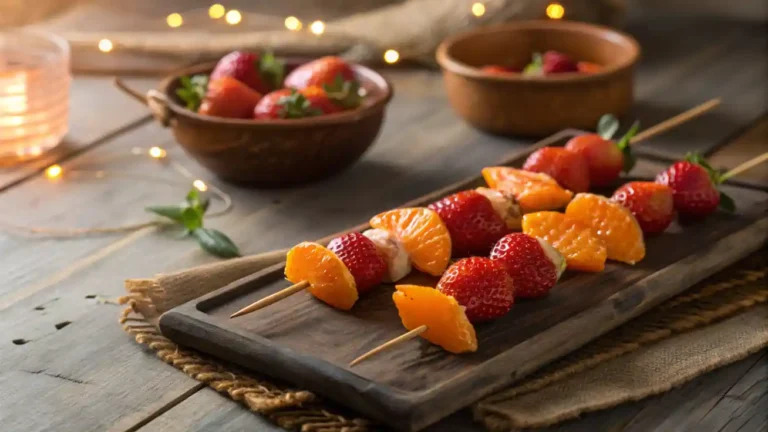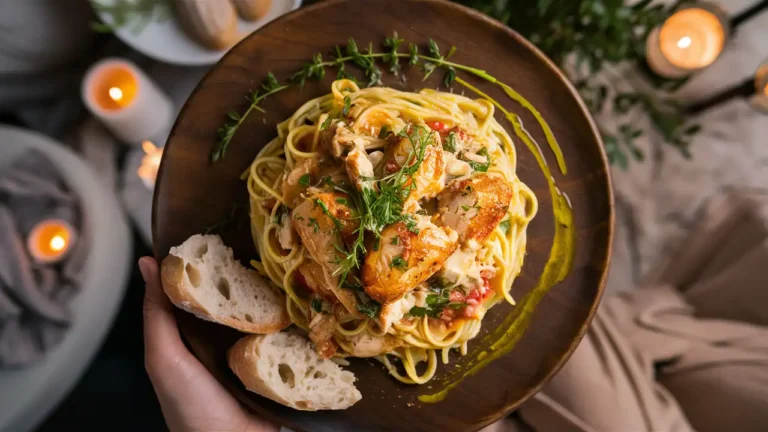Crispy Crab Rangoon with Cream Cheese Twist
Crab Rangoon is a delicious appetizer popular in American Chinese cuisine. It’s made by wrapping a creamy filling of crab meat, cream cheese and seasonings inside a wonton wrapper. The filled wontons are then folded into small parcels and either deep-fried or baked until crispy and golden.
JUMP TO RECIPE
What Is Crab Rangoon?
Crab rangoon is a delicious appetizer that combines the richness of cream cheese with the sweet flavor of crab. In this article, I will guide you through how to make authentic crab rangoon, perfect for impressing guests or enjoying on your own. These crispy, fried wontons are a staple in many Chinese restaurants and are surprisingly easy to prepare at home.
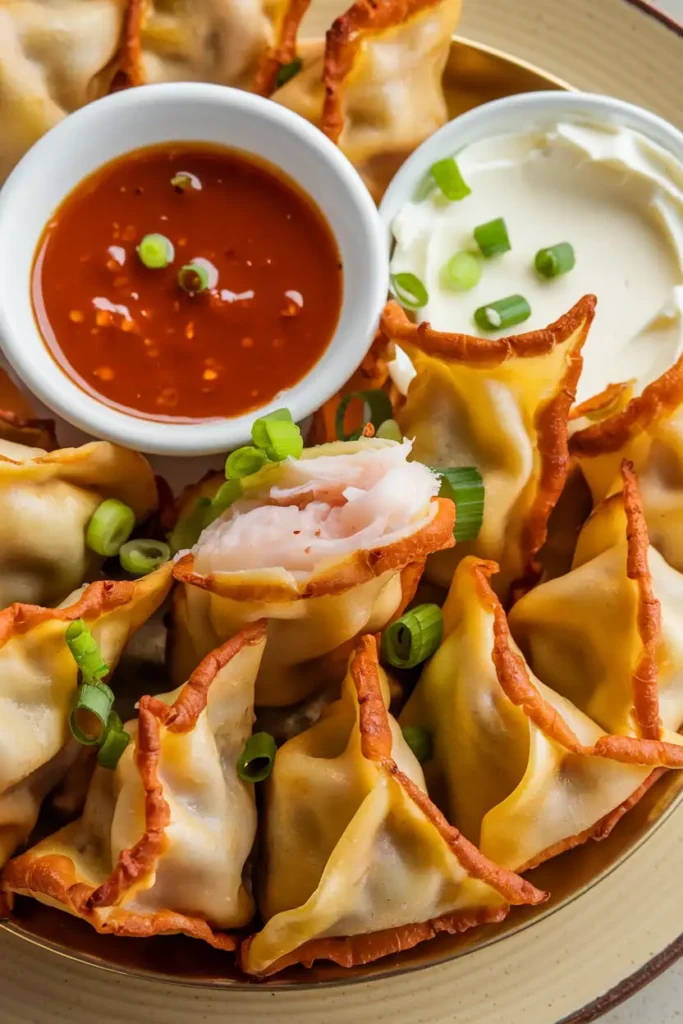
With a few simple ingredients and some easy cooking methods, you can create this tasty dish that brings a touch of takeout to your kitchen. I’ll also share tips on presentation and storage, so your crab rangoons taste great whether you serve them right away or make them ahead of time.
Get ready to roll up your sleeves and experience the joy of making this popular appetizer from scratch!
Key Takeaways
- Crab rangoon is a creamy and crispy appetizer featuring cream cheese and crab.
- Simple ingredients and techniques make this dish easy to prepare at home.
- Proper storage and presentation tips enhance the enjoyment of your crab rangoons.
Crab Rangoon Origin
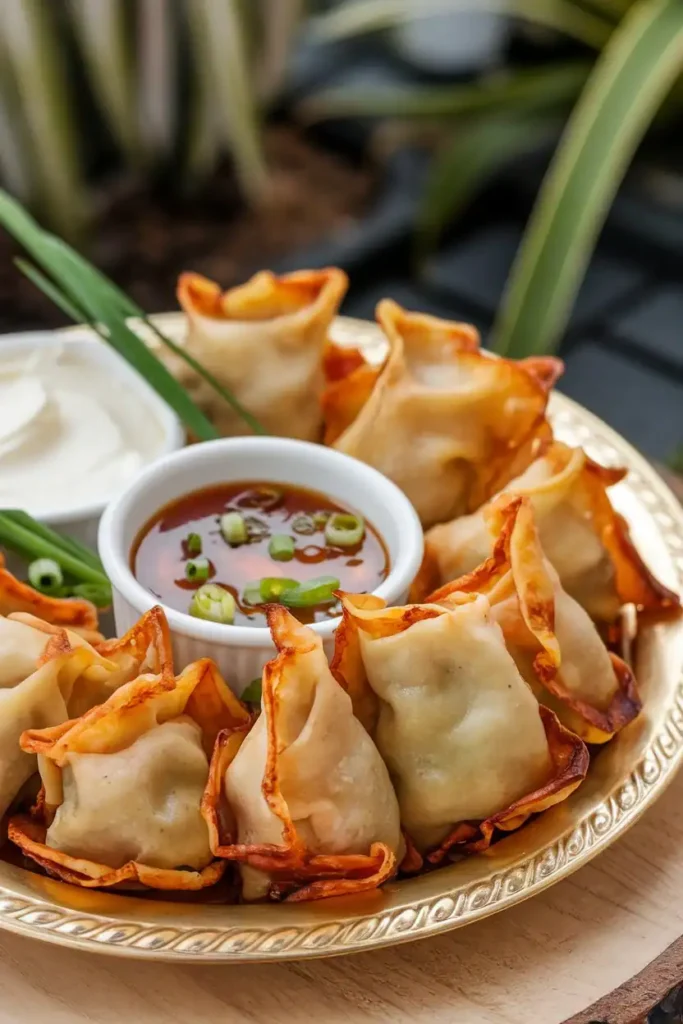
Crab Rangoon has an interesting history that connects it to both American creativity and its perceived roots in Chinese cuisine. I will explore its true origins as well as how it became popular in Western culture.
Authentic Ties to Chinese Cuisine
Crab Rangoon is often mistaken as a traditional Chinese dish. In reality, it has no direct ties to authentic Chinese cuisine. The appetizer likely originated in the United States, specifically at Trader Vic’s in the 1940s. Joe Young, a Chinese-American chef, is credited with developing this dish.
While it may share some characteristics with Chinese appetizers, such as wontons, its primary ingredients, like cream cheese, are uncommon in traditional Chinese cooking. Instead, they reflect a blend of various culinary practices that aim to please American taste buds.
The name “Rangoon” refers to the city in Myanmar, formerly known as Burma. This adds to the confusion about its origins, but the dish’s true birthplace is firmly in the U.S.
Popularity in Western Culture
Crab Rangoon quickly gained fame as a popular appetizer in Chinese restaurants and takeouts across North America. I have seen it featured on menus from fast-food places to upscale dining establishments.
Its appeal lies in the creamy, savory filling, which is often made with imitation crab and cream cheese, wrapped in a crispy wonton. This combination captures the attention of many diners.
Over the years, it has evolved, leading restaurants to experiment with flavors. Variations like spicy crab rangoons and dips have emerged, showcasing its versatility.
Today, Crab Rangoon remains a staple in many Chinese takeout places and is recognized as a classic part of Americanized Chinese cuisine.
Crab Rangoon Ingredients
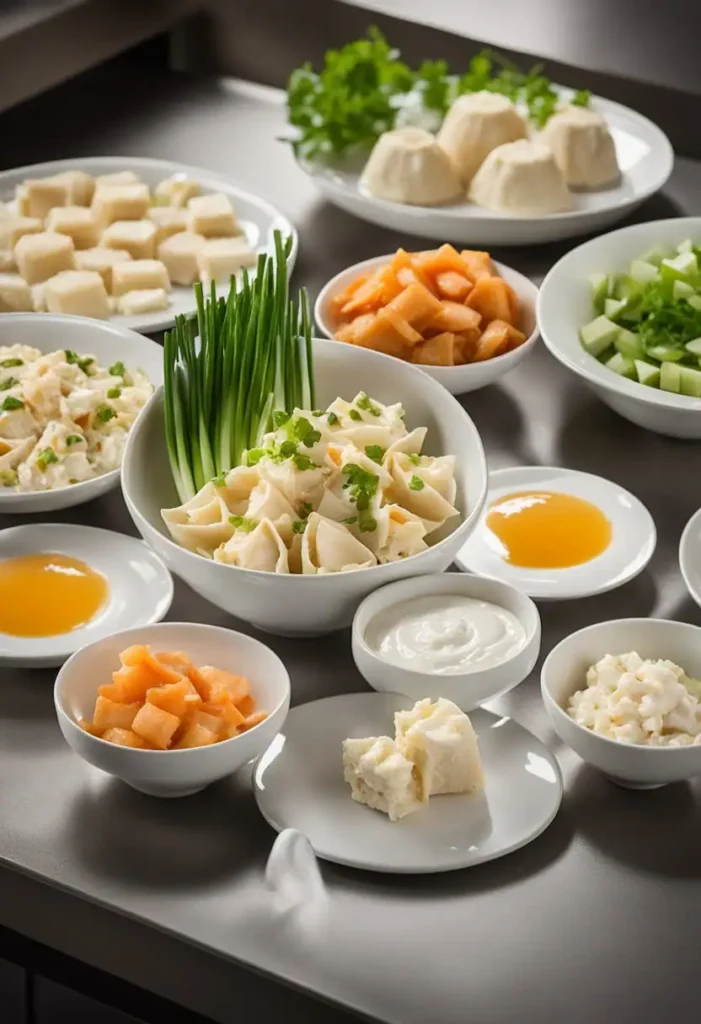
I will discuss the key ingredients used in crab rangoon, along with some options for substitutions. This will help you customize the recipe to fit your taste or dietary needs.
Primary Components
The main ingredients for crab rangoon include cream cheese, wonton wrappers, and crab meat. Cream cheese provides a rich and creamy texture, while wonton wrappers add a crispiness when fried. Crab meat is essential for flavor, but it can be substituted based on your preference.
- Cream Cheese: Use full-fat for the best taste. Neufchâtel is a lower-fat option.
- Wonton Wrappers: These are usually found in the refrigerated section of stores. For gluten-free options, look for rice paper wrappers or homemade alternatives.
- Crab Meat: Fresh crab adds the best flavor, but I often use imitation crab as a cost-effective alternative.
Crab Meat Varieties
Crab meat comes in different types, each offering unique flavors and textures. I can choose from fresh, canned, or imitation crab meat.
- Fresh Crab: This is the ideal choice for real crab flavor. Use lump crab or claw meat for the best results.
- Canned Crab: Convenient and still tasty, canned crab can be a quick substitute. Drain it well to avoid excess liquid.
- Imitation Crab: Made from fish, imitation crab is a budget-friendly alternative. It lacks the same depth of flavor but works well in a pinch.
Crab Rangoon Filling Variants
I enjoy experimenting with different flavors in crab rangoon by introducing creative fillings. This can make the dish unique and appealing to various taste preferences.
- Tofu: A great option for vegan recipes, tofu can replace crab meat. It absorbs flavors well when mixed with seasoning.
- Shrimp: For seafood lovers, chopped shrimp can be an exciting alternative. Combine it with cream cheese and seasoning for a delicious mix.
- Seasonings: Adding garlic, green onions, soy sauce, or Worcestershire sauce can elevate the flavor. Adjust sugar, salt, and seasoning to your liking for a balanced taste.
Feel free to get creative with your crab rangoon to find the perfect combination that suits your palate. Craving something baked and savory? Salmon Sushi Bake is the perfect dish for sushi lovers.
How To Make Crab Rangoon Recipe?
Making crab rangoon involves specific methods for wrapping and sealing the dumplings properly. These steps are crucial to ensure the filling stays intact while cooking and to enhance the overall texture of the dish.
Step 1: Make A Crab Rangoon Wrap With Filling
I like to start by preparing my filling. The filling usually consists of cream cheese and imitation crab. Once it’s ready, take a wonton wrapper and place about a teaspoon of filling in the center.
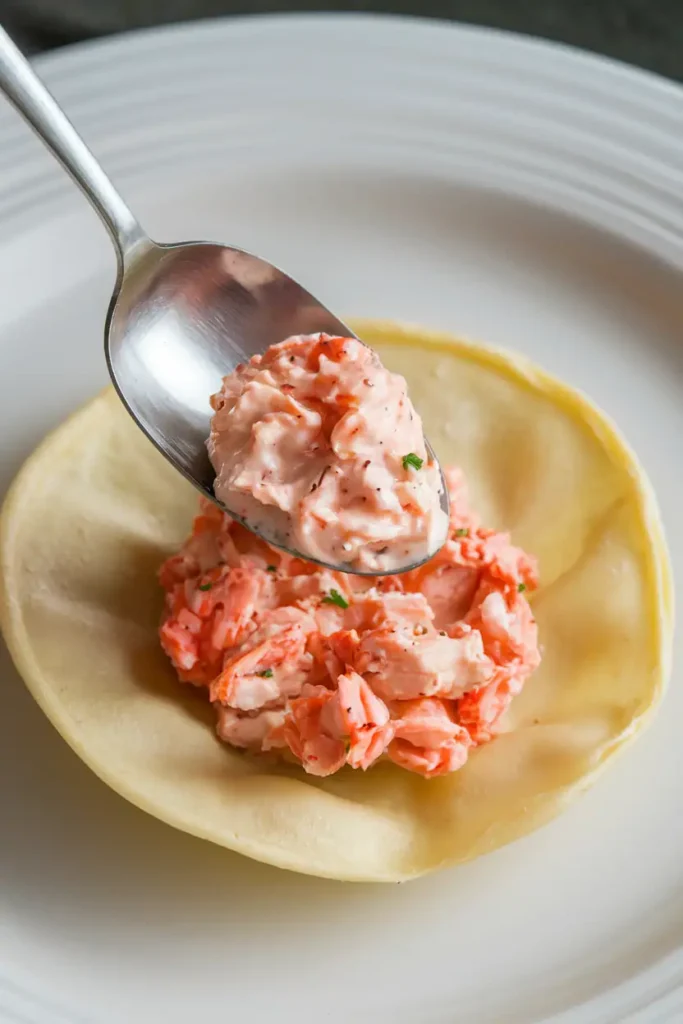
To wrap it, I fold the wrapper into a triangle. I then press the edges together firmly to form a tight seal. For added security, I often use a bit of egg wash along the edges. This not only helps the edges stick but also gives a nice golden color when fried. It’s important not to overfill; otherwise, the filling can leak out during cooking.
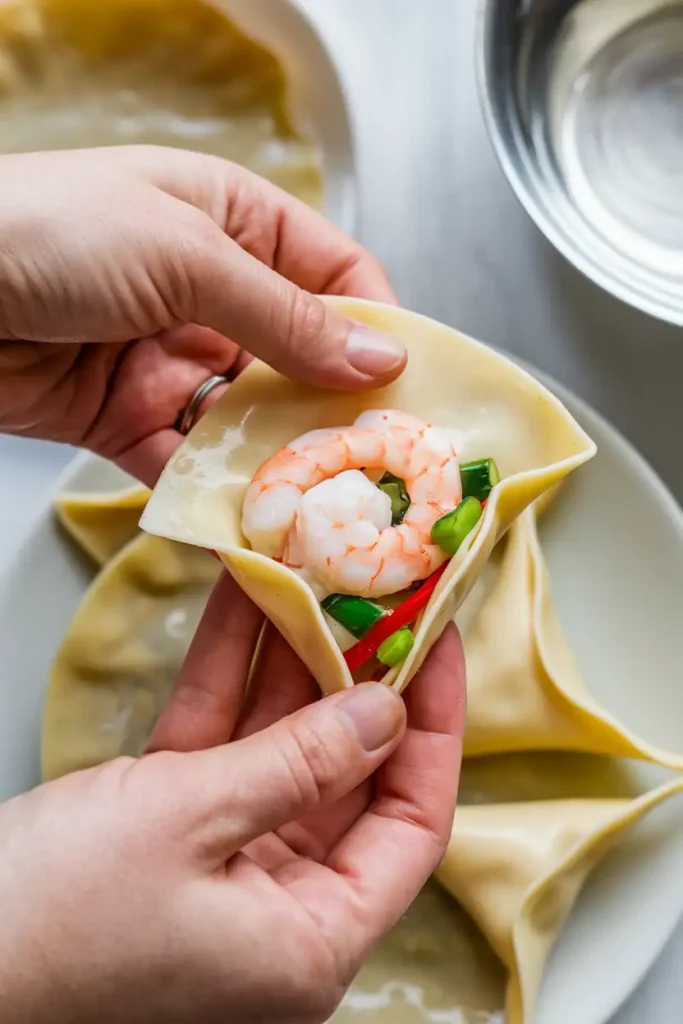
Step 2: Fold Crab Rangoons and sealing to Prevent Leakage
Sealing the crab rangoon properly is essential to avoid any leakage while cooking. After folding the wrapper into a triangle, I push out any air pockets before sealing. This step can help prevent the filling from bursting during frying or baking.
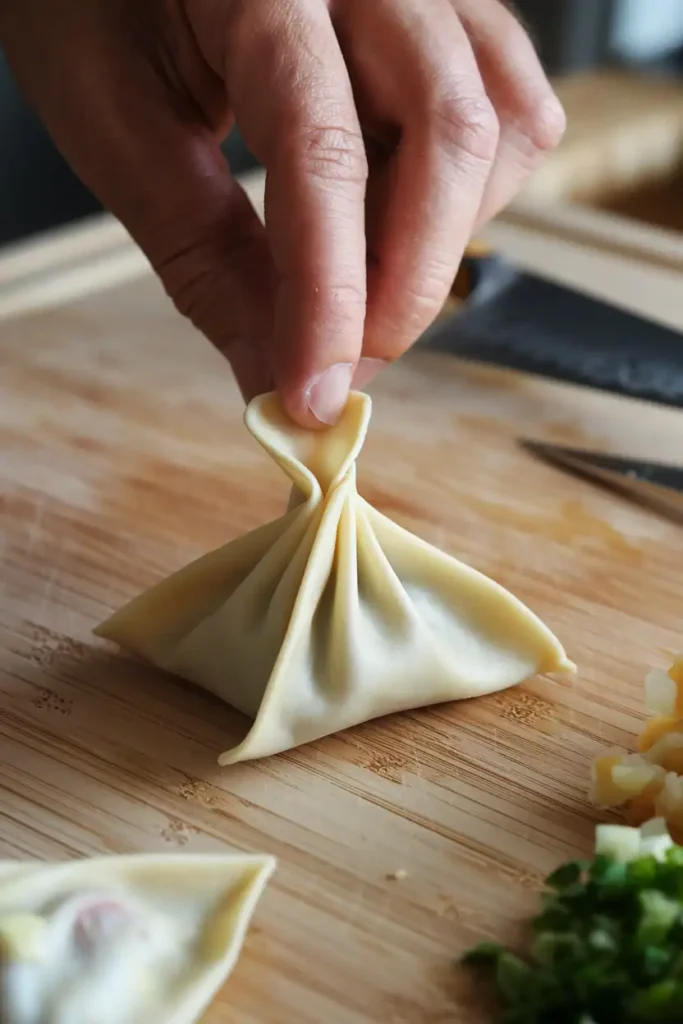
Next, I ensure that the edges are sealed tightly. I like to press them with my fingers or use a fork to create a decorative crimp. This helps reinforce the seal. If I notice any areas that still seem loose, I add a bit more egg wash to strengthen the seal. Proper sealing can make a significant difference in the final texture and taste.
Step 3: Crab Rangoon Cooking Methods
There are several effective methods for cooking crab rangoon, each offering different results. I can choose between deep-frying, baking, and air frying based on my preferences for taste and healthiness.
Deep-Frying for Golden Texture
When I deep-fry crab rangoon, I achieve that desirable golden brown color and crispy texture. I start by heating oil in a deep pan to about 350°F (175°C). It’s important to use an oil with a high smoke point, like vegetable or canola oil.
Once the oil is ready, I carefully place the filled wontons in, making sure not to overcrowd the pan. They usually take about 3-5 minutes to fry until they are golden and crispy. After frying, I drain them on paper towels to remove excess oil.
This method yields a rich flavor and satisfying crunch, perfect for dipping in sweet chili sauce.
Baking as a Healthier Alternative
Baking crab rangoon allows me to enjoy a similar taste with less oil. To start, I preheat my oven to 375°F (190°C). I line a baking sheet with parchment paper and spray it lightly with cooking spray.
Next, I arrange the crab rangoon on the sheet, ensuring they are not touching. I lightly brush the tops with oil to help them crisp up. They typically take around 15-20 minutes to bake, and I check for a golden brown color.
Baking offers a healthier option without sacrificing much flavor, making it a fantastic choice for a lighter meal.
Air Frying Crab Rangoon
Air frying is a modern technique that I find incredibly convenient. It allows for a crispy exterior without all the oil required for deep frying. I preheat my air fryer as per the manufacturer’s instructions, usually to about 375°F (190°C).
While the fryer heats, I prepare my crab rangoon. I lightly brush them with oil for added crispiness. I place them in a single layer in the basket, cooking in batches as needed. They typically take about 8-10 minutes to reach the perfect crunch.
Air frying offers speed and ease, making it an ideal method when I want crab rangoon quickly without losing texture.
Step 4: Serving and Presentation
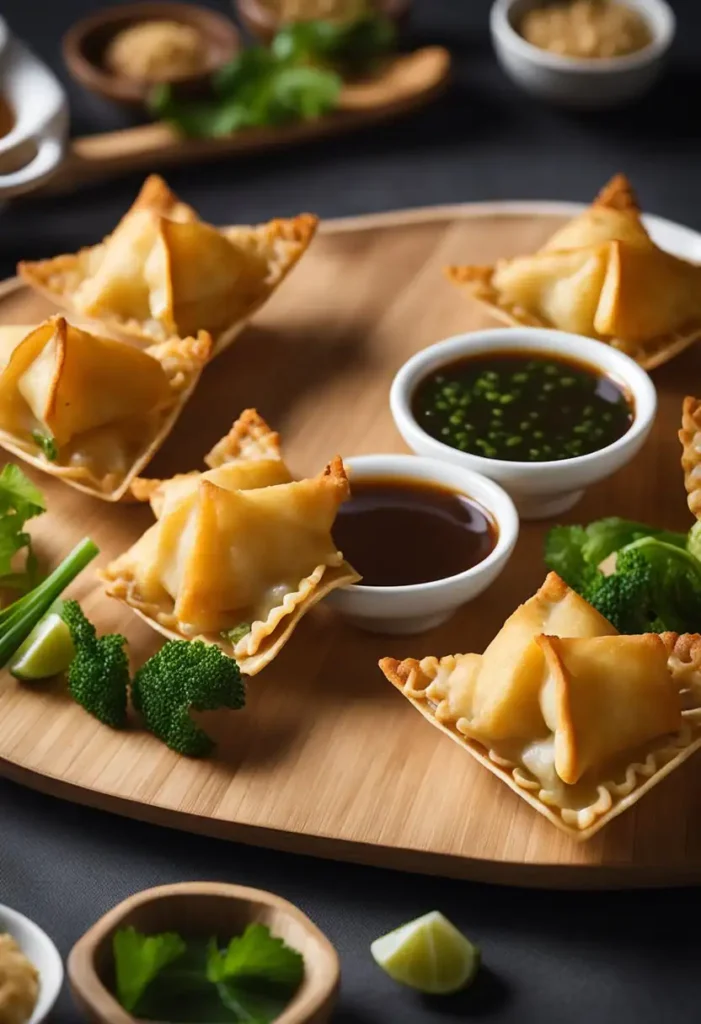
To create a well-rounded experience with crab rangoon, I focus on the right dips and sauces, as well as appealing garnishing. These elements not only enhance the flavor but also elevate the overall presentation.
Crab Rangoon Dip
When serving crab rangoon, choosing the right dipping sauce is essential. Popular options include:
- Sweet and Sour Sauce: This classic dip offers a balance of sweetness and tang, making it a perfect match for the creamy filling.
- Duck Sauce: A fruity sauce made from apricot preserves, vinegar, and soy sauce, it adds a delightful sweetness that complements the savory rangoon.
- Sweet Chili Sauce: This sauce provides a little heat and sweetness, enhancing the flavor without overpowering it.
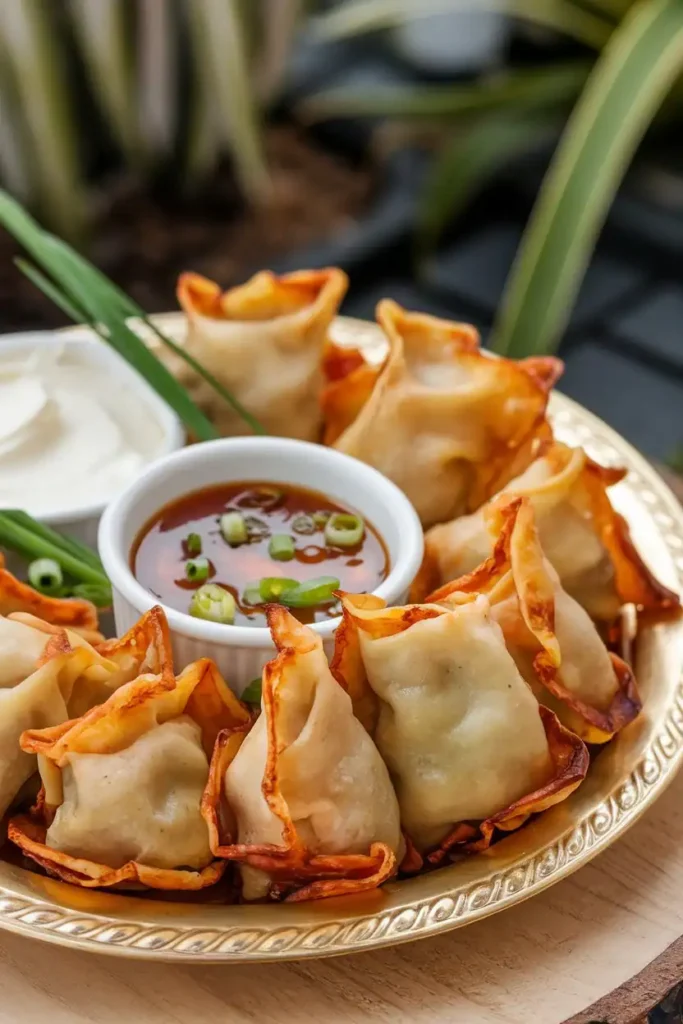

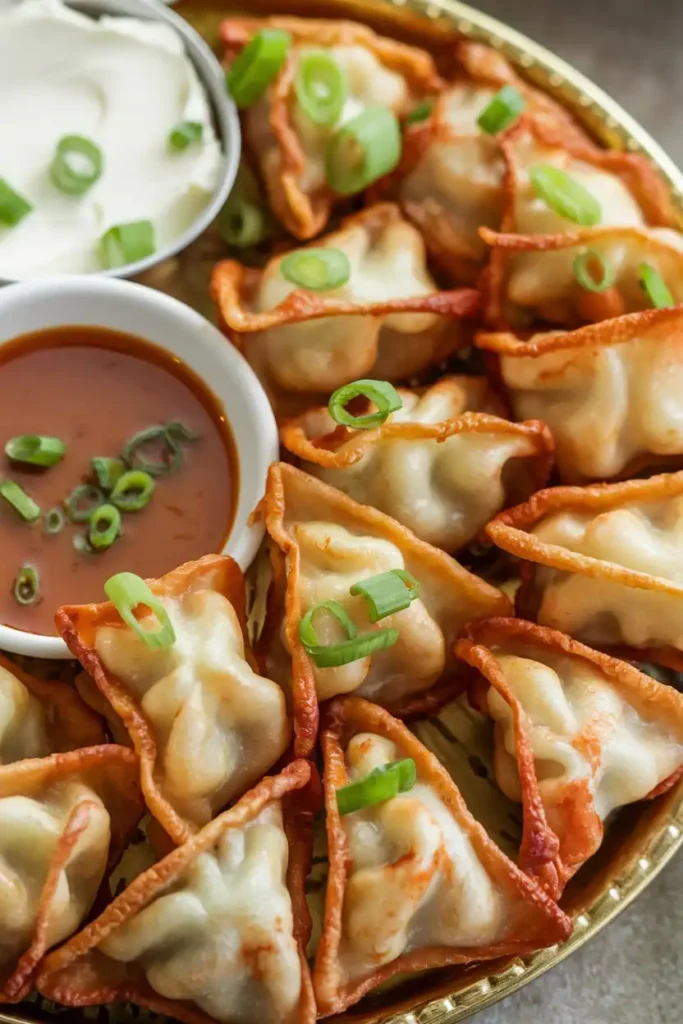
I usually place a small bowl of the chosen sauce on a serving plate. This not only adds to the visual appeal but also makes it easier for guests to dip their crab rangoon. Want more bite-sized delights? Spam Musubi is another quick and easy recipe to try.
Garnishing for Visual Appeal
Garnishing is a vital step in making my crab rangoon dish stand out. Simple yet effective garnish ideas include:
- Chopped Green Onions: Sprinkling fresh green onions on top adds a pop of color and freshness.
- Sesame Seeds: A light sprinkle of sesame seeds can enhance texture and visual appeal.
- Cilantro Leaves: Tucking a few cilantro leaves beside the rangoon adds a vibrant touch.
Arranging the crab rangoon in an attractive way is also important. I usually arrange them on a platter in circles or rows for a neat presentation. This careful arrangement makes the dish inviting and ready for my guests to enjoy. After enjoying a savory bite of Crab Rangoon, why not satisfy your sweet tooth with Tanghulu—a simple yet delightful candied fruit snack?
How To Freeze Crab Rangoons?
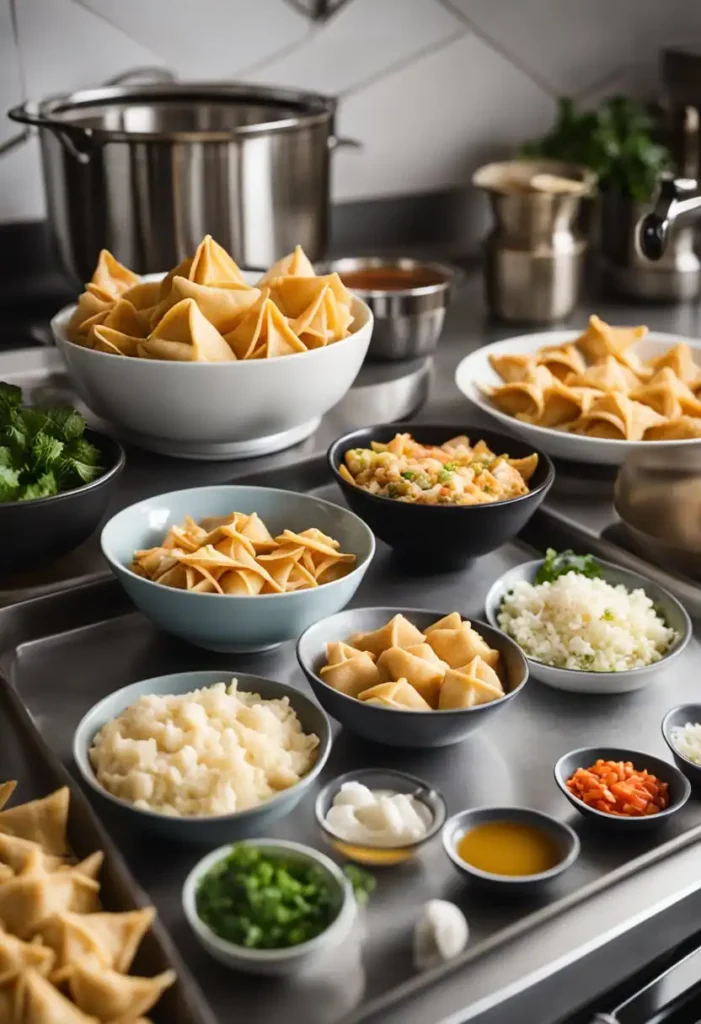
I find that planning ahead can make enjoying crab rangoons even easier. Proper storage methods and techniques for making them in advance can save time and keep them tasting great. This appetizer pairs beautifully with our Marry Me Chicken Pasta for a complete meal.
Freezing and Refrigeration
To prepare crab rangoons ahead of time, I like to store them properly. After assembling the rangoons, I place them in a single layer on a baking sheet, then freeze them for a couple of hours. Once they are firm, I transfer them to a freezer-safe bag or container.
This method helps prevent them from sticking together. If I store uncooked rangoons in the refrigerator, I make sure to use an airtight container and consume them within 24 hours for the best taste.
For cooked crab rangoons, I let them cool completely before placing them in an airtight container. They can be stored in the refrigerator for 2-3 days, but they tend to taste best fresh.
Reheating Without Losing Quality
When reheating crab rangoons, I aim to keep them crispy. I usually preheat my oven to 350°F (175°C) and place the rangoons in a single layer on a baking sheet. This method helps them regain their crunch.
I heat them for 10-12 minutes or until they are heated through. If I use a microwave, I find that the texture suffers, so I avoid it if possible.
For the best results, reheating in an oven is ideal. This preserves the flavor and quality that makes crab rangoons so delicious. Pair your crispy Crab Rangoon with a flavorful hot pot for a complete Asian-inspired dinner experience!
Save This Crab Rangoon Recipe
Crab Rangoon Recipe
Course: Seafood, SnackCuisine: American Chinese12
pieces20
minutes10
minutes30
minutesCrab Rangoon is a delicious appetizer popular in American Chinese cuisine. It's made by wrapping a creamy filling of crab meat, cream cheese, and seasonings inside a wonton wrapper. The filled wontons are then folded into small parcels and either deep-fried or baked until crispy and golden.
Ingredients
8 oz cream cheese (softened)
1 cup crab meat (cooked)
2 green onions (chopped)
1 tsp garlic powder
1 tsp soy sauce
Wonton wrappers
- Equipment Needed
Mixing bowl
Frying pan or air fryer
Wonton wrappers
Cooking spray or oil
Directions
- In a mixing bowl, combine the cream cheese, crab meat, green onions, garlic powder, and soy sauce.
- Lay out a wonton wrapper. Place about 1 tablespoon of the mixture in the center.
- Wet the edges with water, fold the wrapper, and seal tightly.
- Heat oil in a frying pan or air fryer. Cook until golden brown and crispy.
- Serve with sweet and sour sauce or duck sauce for dipping.
Notes
- Storing leftovers is easy. Just place them in an airtight container in the refrigerator for up to 3 days.
Crab Rangoon: Frequently Asked Questions
I often get questions about crab rangoon, especially regarding ingredients, cooking methods, and tips for the best results. Here are some key points that can help clarify these common inquiries.



